Cassette decks: history and the best models
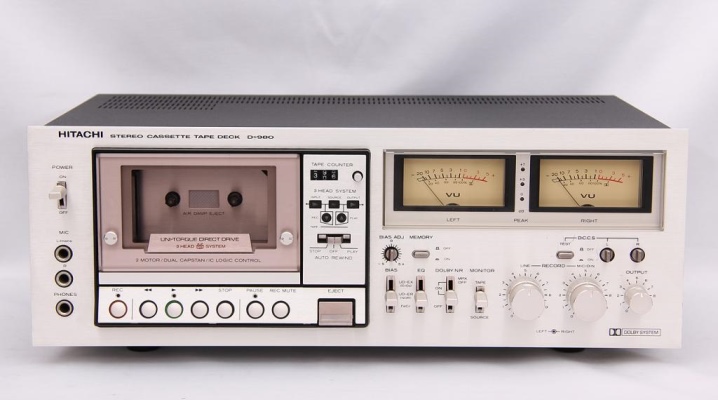
More recently, it seemed that cassette decks, which enjoyed record popularity in the 80s and 90s of the last century, practically became history. However, many people are now showing interest in this technique. On thematic forums, the characteristics and ratings of the best vintage models, as well as the possibility of purchasing them, are actively discussed.
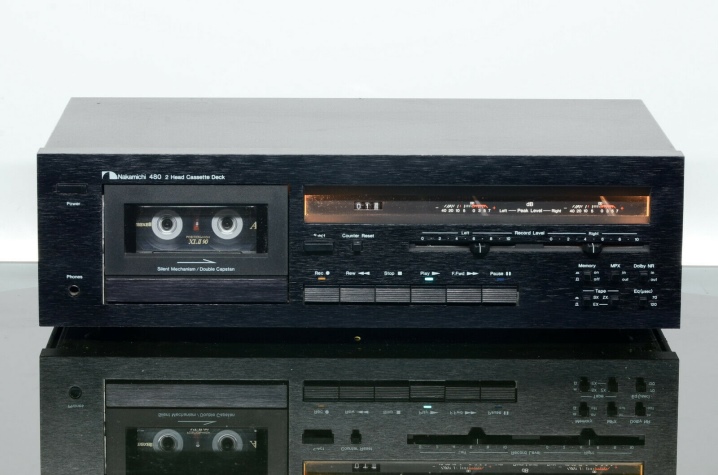
History
The history of cassette decks dates back to 1964. One of the key events was the release of the first tape recorder by Aiwa. Just a few years later, the then advanced technology has spread at a record pace almost all over the world. By the way, in 1980, Aiwa presented to the general public the best device by the standards of that time.
One of the highlights for the 20th century music industry was the release of the first compact cassette by Philips. It should be noted that the developer did not impose any restrictions on the use of his invention. As a result, both the media themselves and tape recorders, which quickly conquered the market, became widespread.

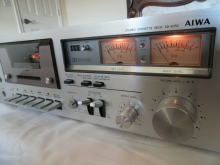
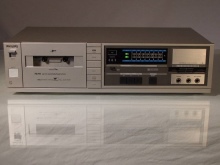
Some of the most popular are the models produced by Akai Electric Company Ltd. This Japanese firm was founded in the summer of 1929 by Masukishi Akai. High-quality decks equipped with three heads were in particular demand, namely, Akai models GX-90, GX-F91, GX-F95 and GX-R99. The production of such tape recorders ceased more than 3 decades ago. Despite this, interest in them has not completely faded away, and recently it has even grown.
Another legendary brand in the history of cassette decks is Pioneer. The predecessor of the brand was Fukuin Shokai Denki Seisakusho, founded in Tokyo in 1938. After 9 years, Fukuin Denki was registered, which in 1961 was renamed Pioneer Electronic Corporation. Decks of this brand literally conquered the market at one time and were widely known.
In the USSR, as in the West, portable tape recorders were ahead of stationary models. The specialists of the "Vilma" plant became the pioneers in the field of creation of domestic tape recorders-set-top boxes.
It should be noted that at that time it was about attempts to create analogues of imported equipment.
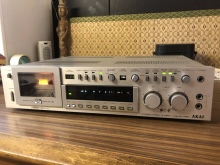
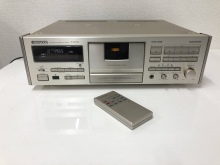
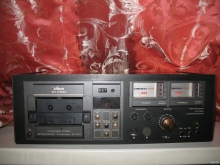
General characteristics
Much of the mechanics of a cassette deck are concentrated in the tape drive assembly, which includes motors and rollers. The main function of the CVL is to feed the film at a stable speed to the head. In this case, the tape is moved from the supply coil to the receiving one, with the prevention of distortions.
The simplest mechanism consisted of one rotating shaft (trowel) and a rubber roller pressed against it. Between these two elements is a cassette tape, which was pulled in front of the playback head. In more advanced models, the developers used 2 tones, which made it possible to create 2 separate pairs (supply and receive).
Such devices were equipped with two or three motors and, as a rule, had the inscription Dual Capstain on the body.
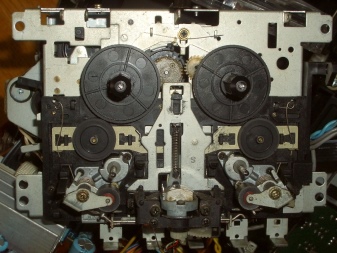

Most of the devices under consideration had a recording function, therefore, at least 2 heads. One of them was responsible for erasing records, and the second was universal (recording and reproducing). This layout is called Two Heads. However, the more expensive and high-quality decks were equipped with three heads:
- erasing;
- recording;
- reproducing.
It should be noted that the last two heads could be made in the form of a sandwich, that is, they had one body.Models with discrete heads were also produced. Special attention should be paid to devices that have a so-called through channel, made according to a completely separate scheme.
In such models, all heads are spaced along the path.

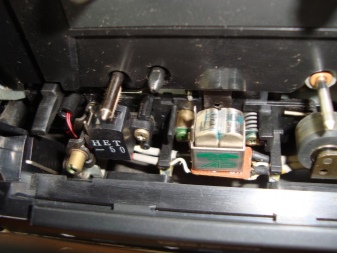
For those who have planned or are planning to record sound on their own, one of the important features will be the ability to calibrate based on the type of film used. The former organization IEC was responsible for the standardization of all types of cassette tape. However, for one reason or another, it was necessary to adjust the bias current, recording level, and a number of other parameters. Based on this, the industry leaders equipped their equipment with generators of various frequencies.
During the dawn of the cassette industry, models with and without reproduction amplifiers were introduced to the market. In addition, some potential buyers paid attention to the presence of such an option as "Autoreverse". By the way, the attitude towards this function was ambiguous. On the one hand, it provided a comfortable operation of the equipment, since the need to turn the cassette was eliminated. At the same time, the rotary mechanisms with the heads installed on them wore out rather quickly, which negatively affected the playback quality.

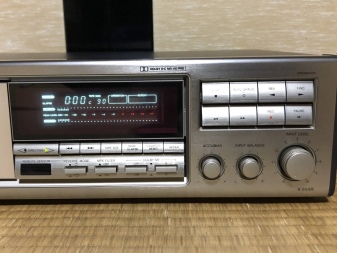
Model rating
Taking into account the development of modern technologies and the widespread use of new generation carriers, the release of the described devices has ceased. But judging by the growing interest, cassette decks may well be back in vogue in many countries around the world. It is worth noting that at the moment many users are interested in reviews and the opportunity to purchase new equipment. In this case, the objects of search are both cheap budget and top-end models of the highest class.
Today it is quite possible to find non-portable tape recorders in Russia and other countries. And we are talking about both simple entry-level devices and more complex two-cassette models. Given the growing popularity of technology on many thematic resources, you can find ratings of the most popular models at one time.
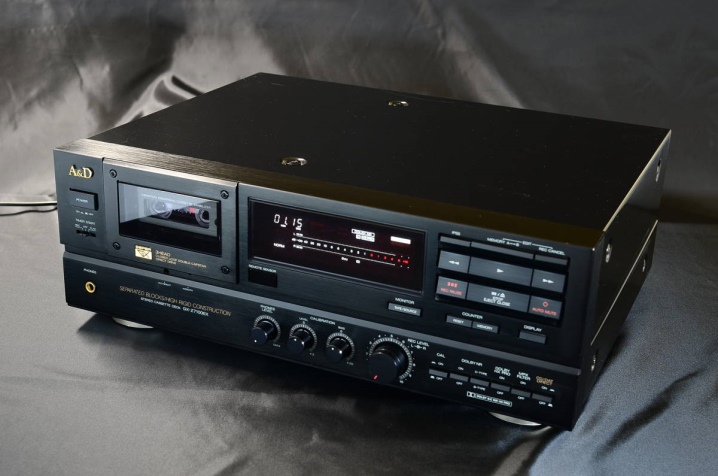
Among all the variety available then, the following samples of products from leading manufacturers can be distinguished.
- Model DX-57 from Akai. Today this brand is well known to modern musicians as a manufacturer of electronic instruments. However, at one time the company specialized in the production of more than a wide range of tape recorders, including cassette tape recorders. The DX-57 is equipped with three heads and has a bias current regulator.
This model became available to consumers in the late 90s of the last century.


- Denon DR-M24HX - cassette deck, which was born in the late 80s. She received from the developers 3 magnetic heads, a stabilized drive mechanism, as well as a system for manual adjustment of all key parameters. The device has won at one time a whole army of fans. And the manufacturing company itself later became famous for the release of high-quality stereo amplifiers.
Another feature of the DR-M24HX is its effective noise reduction system, which eliminates the characteristic hiss that accompanies the playback of audio recorded on audio cassettes.
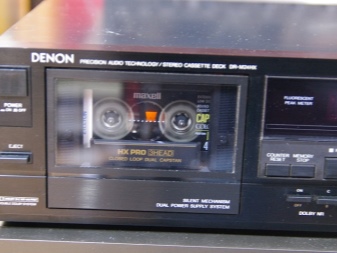
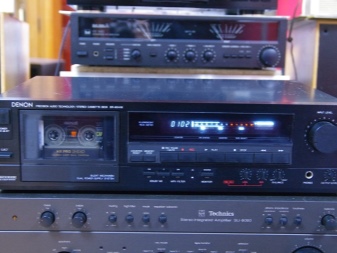
- DRS-810 - a later model of the deck of the same Denon company. Outwardly, it is somewhat similar to CD-players, which at that time had already begun to conquer the market. One of the design features of the deck is the horizontal loading of cassettes. Because of this, the ability to track the process of playing and moving the tape from one reel to another was lost. It should be noted that these devices were equipped with remote controls. However, nowadays it is quite difficult to find a working deck with a remote control.
The developers did not forget about the noise reduction system and the bias current regulator.

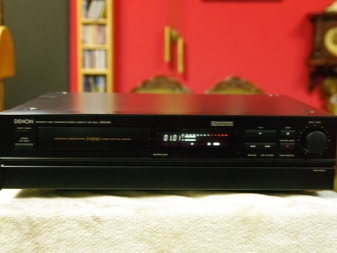
- TD-V662 from the famous JVC company. In this case, we are talking about one of the most worthy representatives of the huge family of cassette decks of the mid-90s.Due to its technical characteristics, the model, which was born in 1993, is equally capable of interacting with all existing types of cassette tape. This feature was immediately appreciated by music lovers. The originality of the external appearance of the model is given by the location of the compartment for cassettes in the central part of the device. In addition to the traditional headphone jack (1/4 inch) and Dolby B and C systems, as well as the HX Pro, the deck received a CD-Direct connector.
It should be recalled that at one time JVC was recognized as one of the leaders in the video and audio equipment industry. Today it presents on the market a line of boomboxes, video cameras and headphones.

- Cassette deck СТ-S740S is a prime example of the quality of the company's products that have become a true legend. Appeared on the market in the 70s of the last century, the model was able to compete with cassette recorders of the famous brand Nakamichi. By the way, the latter was literally at the origins of the history of the industry and at that time produced equipment that is considered the standard of quality. The creators equipped the CT-S740S with an advanced noise reduction system for that time, which became a real breakthrough for Pioneer specialists.
Now it is quite difficult to find this model in a decent condition, however, with a certain perseverance, you can achieve the desired result.


- Sony initially failed to become one of the manufacturers of reliable and high-quality stationary recorders. However, the situation changed to some extent with the appearance of the TC-K611S model in 1994. This was one of the successful attempts of the Japanese brand to declare itself in this market segment. However, the model was developed for cassettes with films based on metal powder and chromium dioxide. This means that the model will not be the best option for those who are looking for a device exclusively for high-quality sound reproduction. At the same time, it will be the best option for home recording enthusiasts.
In this case, the maximum quality will be provided by three magnetic heads and a Dolby S system.

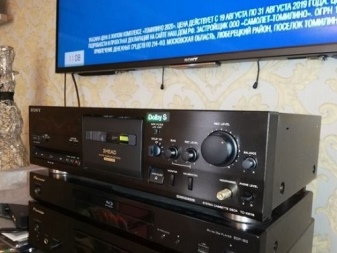
- From the lineup of the legendary Yamaha brand, it is worth highlighting the cassette deck KX-300. Created in Japan in the era of the 80s, the model received magnetic heads made of amorphous metals. This approach maximized the quality of the reproduced sound. When buying this deck, it should be borne in mind that due to its considerable age, it is likely that the elements of the drive mechanism will need to be replaced. Fortunately, even nowadays, finding and buying everything you need is usually not a problem. The KX-300 is equipped with two magnetic heads, a noise reduction system and a remote control.
At the same time, the main feature of the model is automatic calibration.
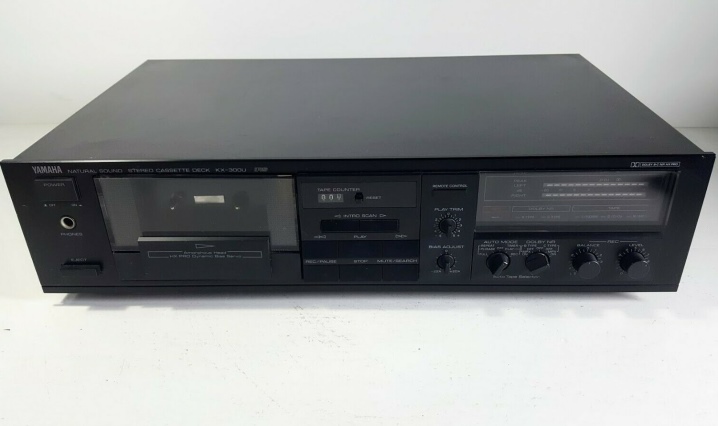
- The list of models of stationary cassette recorders popular at one time would be incomplete without a representative of the family Nakamichi. One of the famous representatives of this brand's lineup is the BX-125E deck. It combines high quality and reliability, backed by a time-tested reputation as a real giant in the industry. Many owners in their reviews focused on the stylish design of the model. But with all the advantages in terms of a set of additional functions, it practically did not differ from its closest competitors.
In this case, we are talking about decks belonging to one price segment.
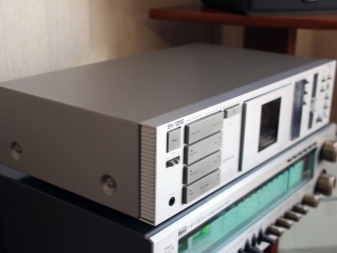

Of course, this is not a complete list of devices that were presented on the market during the heyday of the cassette industry. Given the record demand, a wide range of products from many manufacturers was then available to potential buyers.


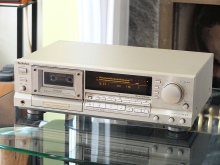
Which one to choose?
These days, vintage decks in good and even perfect condition can be found at popular online auctions. In this case, we are talking about both cheap models and products from Denon, Nakamichi, Akai, Pioneer and other leaders of the once flourishing industry.Naturally, each purchase in this case is a "pig in a poke", since the state of technology can be checked only after receiving the order. At the same time, proven sellers, as a rule, value their reputation and do not risk their image.
By the way, modern ION and Pyle models can be purchased on Amazon with delivery to the Russian Federation. This equipment can be interfaced with a PC or laptop via USB. However, these devices, stylized as real decks, are significantly inferior to the prototypes in terms of sound quality. When choosing a cassette deck, it should be borne in mind that high-quality models should have 2, or preferably 3 drive motors. Also, these models were equipped with three heads. Experienced owners point out that a double cassette deck is not always a good option for the following reasons.
- Typically, as the number of parts increases, reliability and performance suffer.
- Hardly anyone will need to rewrite songs from one cassette to another. In other words, the key function of the device will remain unclaimed.
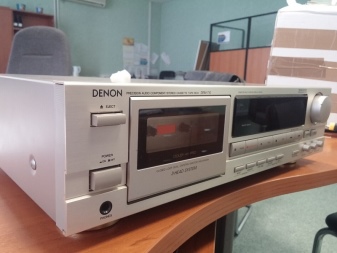

Another key point is brand choice. Products of domestic manufacturers will not be the best option. An exception, provided that it is possible to find the device in perfect condition, may be "Electronics MP-204" and "Mayak-233".
It is important to take into account that the deck, released in due time by one of the industry leaders, may be in a "dying" state. It is for this reason that it is strongly recommended that such purchases be treated with the utmost caution. Naturally, first of all, you should check the condition and performance of the CVL, which is the key component of any cassette deck.
Another important point is the presence of a functioning noise reduction system. By the way, domestic "Mayaks" had a similar option. Also, if possible, it is worth focusing on models designed for the use of all four existing types of film, namely, Metal, Fe, FeCr and Cr.
At the moment, in the overwhelming majority of cases, decks are purchased not for playing sound files, but as an original element of the interior. For this reason, when choosing, you should pay special attention to the appearance of the technique. According to statistics and reviews, tape recorders, which were produced in the early 80s of the last century, are in special demand.
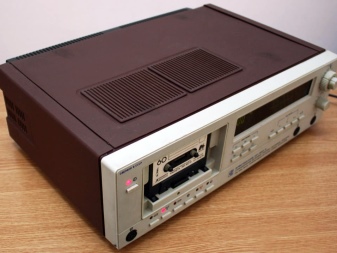
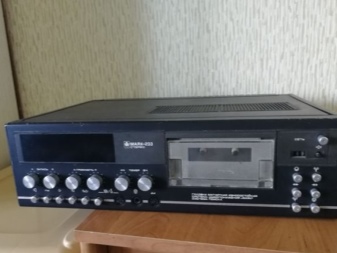
You can watch a video review of the Sony TC-KA7ES cassette deck below.













The comment was sent successfully.